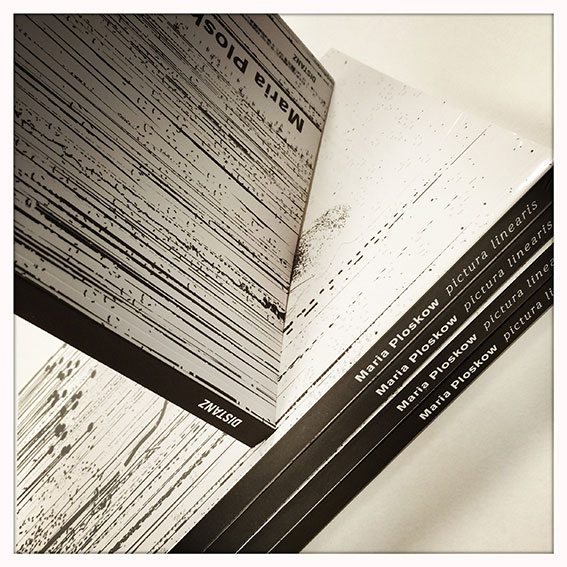Maria Ploskow about
(…) Perhaps it is above all the experience that logic and the importance of the linear cannot be reduced to a uniform conceptual category which Maria Ploskow’s examination of the elementary vocabulary of the drawing seeks to provoke. Just as the traces of recorded physical and semantic restlessness with the relative non-determinability of their 'real foundation' forces one to refer to intuitive, conventional or theoretical constructs if one wants to 'understand' them, so they also plunge the mere perception of the structures they create into indeterminable situations, since each stroke on the surface simultaneously influences the value of all the other existing graphic elements too. The untouched surface becomes a structured order consisting of positive and negative subsurfaces which have an effect on each other and, from a certain degree of complexity on, can no longer be limited with regard to their mutual references. And if, in spite of this provocation, one believes one can read something into the drawings of Maria Ploskow, there still remains the doubt that one will have overlooked something else, something which lies beyond the clear messages that tend to include us in a secure world of normality.
Michael Hauffen
pictura linearis / DISTANZ Verlag Berlin 2014 / Drawings

(…) Vielleicht ist es vor allem die Erfahrung, dass sich Logik und Bedeutung des Linearen nicht auf ein einheitliches Begriffsmuster reduzieren lassen, die Maria Ploskows Auseinandersetzung mit dem elementaren Vokabular der Zeichnung provozieren will. Genauso wie die Spuren aufgezeichneter physischer und semantischer Unruhe mit der relativen Unbestimmbarkeit ihrer »realen Grundlage« dazu zwingen, sich auf intuitive, konventionelle oder theoretische Konstrukte zu beziehen, wenn man sie »verstehen« will, genauso stürzen sie auch schon die bloße Wahrnehmung der durch sie entstehenden Strukturen in unentscheidbare Situationen, weil jeder Zug auf der Fläche zugleich auch den Wert aller anderen vorhandenen graphischen Elemente beeinflusst. Aus der unberührten Fläche wird eine strukturierte Ordnung von positiven und negativen Teilflächen, die aufeinander einwirken und von einem bestimmten Komplexitätsgrad an in ihren gegenseitigen Verweisen nicht mehr zu begrenzen sind. Und wenn man trotz dieser Provokation mehrschichtiger Effekte etwas aus den Zeichnungen Maria Ploskows herauslesen zu können meint, so bleibt doch immer der Verdacht, dass man etwas anderes übersehen haben wird, etwas das jenseits der klaren Botschaften liegt, die dazu tendieren, uns in eine sichere Welt der Normalität einzuschließen.
Michael Hauffen